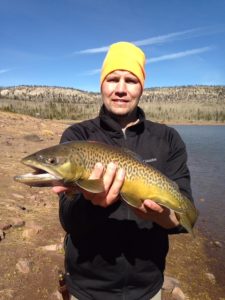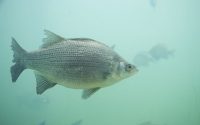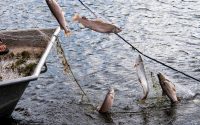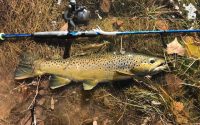Stocking Reports Equal Better Anglers

Most of you (as loyal readers) know I have a somewhat “strained” relationship with the Utah Division of Wildlife Resources (UDWR). I’ve debated until blue in the face with biologists, fisheries managers, and even outreach coordinators throughout the state over issues like daily limits, fisheries management, and warm water species development, just to name a few.
Yes, I have been critical of decisions made by the UDWR. However, as often as I have been critical, I have openly complimented them on jobs well done. Publishing the fish stocking report is one such accomplishment that has the potential to make all of us better anglers.
What is the Fish Stocking Report?
The majority of people claiming to be avid anglers actually go fishing no more than a half-dozen times a year. So, it is crucial to make each trip to the lake or stream as effective as possible. The fish stocking report shows the numbers of fish, species, and the dates they were stocked in our lakes and streams. Here is the link to this page: http://www.utahfishinginfo.com/dwr/fishstockingreport.php. Just find your favorite body of water in the list and see when it was last stocked.
How can this help you become more successful as an angler?
When planning a fishing trip, you could pull up the stocking report and find out if your trip would coincide with any fish stocking in the same body of water in the current or previous years. If so, look at the size of the fish stocked and the species; then determine if you want to target the fish recently stocked or if those fish might be considered food for larger fish in the same body of water. Then, decide on the baits and lures to be used and make a plan of attack, formulated based on the fish stocking information.
Using the Stocking Report
A few years ago, our family was deer hunting near Hoop Lake on the North Slope of the Uinta Mountains. Upon arriving, we began fishing in the normal way for high mountain lakes – with a fly and bubble rig. We began catching small 11 to 13-inch rainbow trout but as my oldest son, Don Jr. began experimenting with a hand-tied black marabou jig, he found schools of huge tiger trout literally a few yards offshore just waiting for his jig to pass by. Don Jr. caught quite a few (20-plus inch) fish as the rest of us continued to catch smaller ones farther offshore.
Another deer hunter ambled by and told us the UDWR had just stocked the lake three days earlier with 50,000 3-inch Arctic graylings in the exact same location Don Jr. was fishing. So, the huge tiger trout were waiting for more graylings to be released and were still actively searching for those stocked three days previous. Once we realized what had happened, we all changed and began fishing with minnow-looking marabou jigs and continued to catch the tiger trout long into the evening.
Other ways to utilize the stocking report might be to see which of the high mountain lakes received fish which might influence your decision as to where to go on a backpacking trip.
And, even more practical, you might want to see how many fish were stocked in Deer Creek, Jordanelle, or Strawberry during the past few months. In preparation for writing this column I noticed that the UDWR stocked close to 400,000 rainbow trout in Strawberry in the past 60 days. They were between 7.5 and 8.5 inches in length – catchable to be sure but in reality, many of those stocked will be eaten by the robust and growing cutthroat population.
This type of information should allow you to choose your lures and baits to match-the-hatch so to speak and fish for the large cutthroats that are undoubtedly chasing down and eating many of the small rainbows recently stocked.
The fish stocking report is a great tool (when used) that could make us all better anglers.










